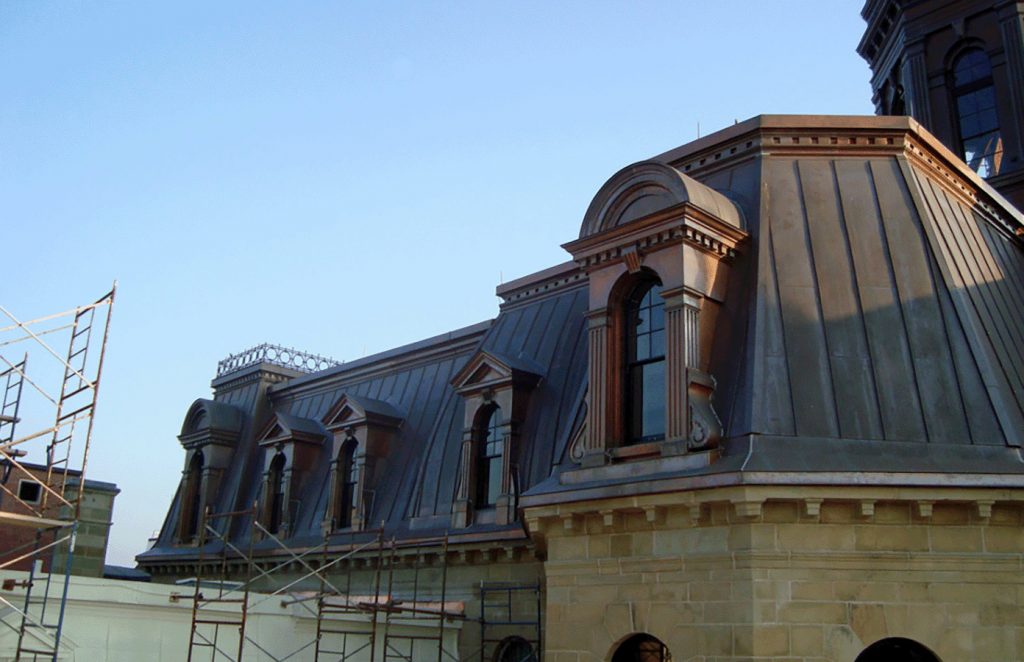Historic buildings hold a special place in our communities, embodying architectural styles and craftsmanship from the past. However, preserving these structures requires more than admiration; it demands proactive care and attention, particularly when it comes to the roof. As a critical element of any building, the roof shields the structure from weather and environmental damage, making its maintenance vital to preserving the building’s overall integrity.
Here’s how to preserve your historic building’s architectural heritage with lead roofing maintenance.
A historic roof is defined by its age, craftsmanship, and the materials used during its construction. These roofs often reflect the architectural styles of the era in which they were built, showcasing unique design elements that contribute to a building’s historic value. From ornate copper shingles to steeply pitched slate roofs, these features are a testament to the skill and resources of their time. Preserving the integrity of a historic roof requires understanding its historical and architectural significance.

Historic roofs are often constructed with materials that were widely available during their time of construction. Some of the most common materials include slate, clay tiles, wood shakes, and various types of metal such as copper or lead. Lead roofing, in particular, has been used for centuries due to its durability and malleability. It was often chosen for intricate details on domes, spires, and decorative elements.
Regular inspections and repairs can help prevent minor issues from developing into costly, extensive damage. Maintaining the roof also protects other parts of the building, such as walls and foundations, from water intrusion and decay.
In addition to preserving the building’s structural soundness, proper roof care can enhance energy efficiency and improve indoor comfort. By addressing small leaks or weaknesses promptly, you can avoid the expense and disruption of major restoration projects down the line.
Historic roofs are prone to several challenges due to age, exposure, and material degradation. Common issues include leaks caused by worn-out flashing, broken tiles, or deteriorated seams. Metal roofs, such as lead or copper, may develop corrosion or cracks over time, while wood shingles or shakes can rot or warp due to prolonged exposure to moisture. Another common problem is improper repairs or replacements made with modern materials that clash with the roof’s original structure.
Selecting the right contractor is a critical step in preserving a historic roof. Look for professionals with experience in historic roof restoration and a strong understanding of traditional materials and techniques. A qualified contractor will assess the roof’s condition and recommend appropriate repair methods that maintain its architectural integrity.
Ensure the contractor is familiar with local regulations and preservation guidelines, as many historic buildings are protected by laws that govern repairs and alterations.
If your historic building needs expert lead roofing maintenance, trust Heather & Little for comprehensive care. With decades of experience in restoring and preserving historic roofs, our team understands the importance of using traditional materials and methods to maintain your building’s architectural heritage. Get a quote with Heather & Little today, and let us help you preserve your building’s history for generations to come.
If you are looking for a second opinion on your project or have a particularly complex issue that needs a fresh eye, such as historic building restoration, we’re here to help. Tackling tricky restoration projects is our specialty, and we welcome the opportunity to provide consulting services. We apply a keen attention to detail to all our commissions.
Join our mailing list and keep up to date on what’s going on with Heather & Little, sheet metal and roofing, including access to industry insights, interesting project case studies and incentives.